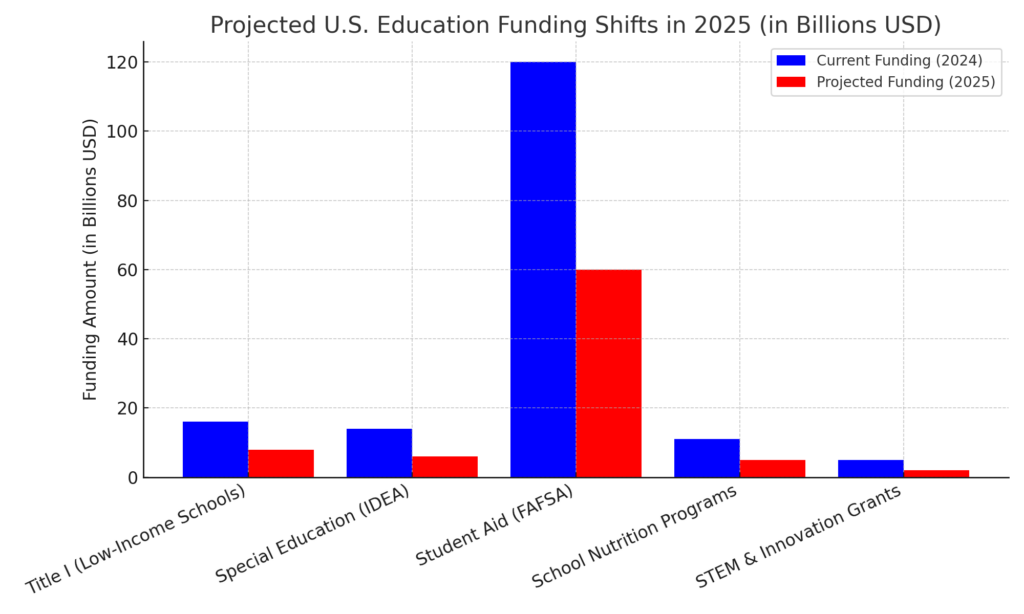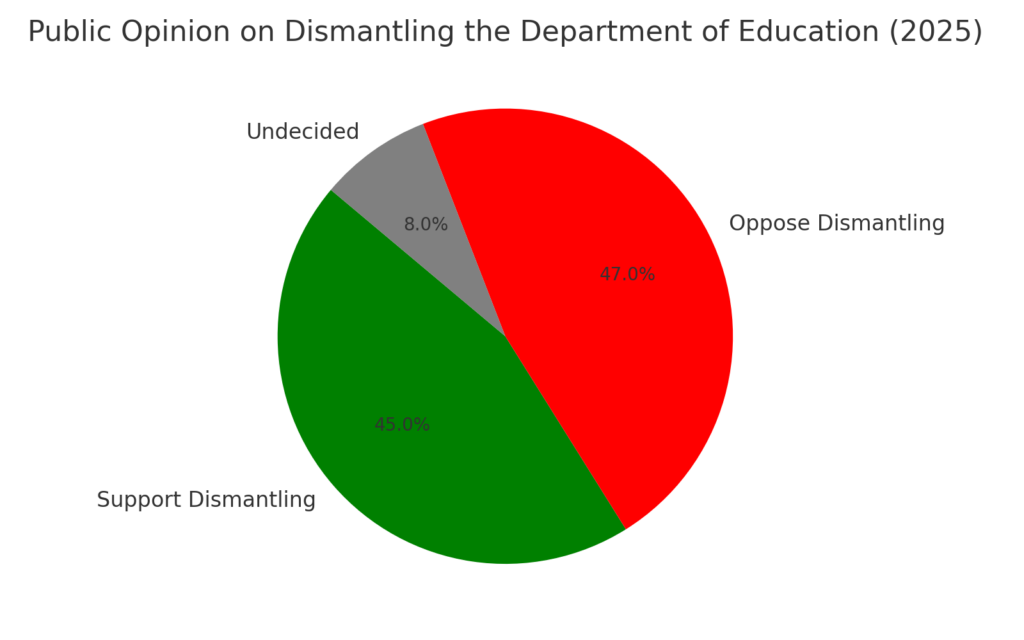Your cart is currently empty!

The Future of U.S. Education:
What Happens if the Department of Education is Dismantled?

A Historic Shift in U.S. Education Policy
The U.S. Department of Education, established in 1979, has played a pivotal role in shaping federal education policy, funding schools, and ensuring civil rights protections for students. In March 2025, former President Donald Trump signed an executive order initiating plans to dismantle the Department of Education, a long-standing conservative objective.

The move, aimed at decentralizing education policy and returning authority to individual states, has triggered heated debate over the future of public schooling, federal funding, and student rights. Critics warn that the dissolution of the Department could have serious consequences for marginalized students, low-income families, and institutions relying on federal support.
This article explores 10 likely outcomes if the Department of Education is dismantled — drawing on expert analysis, historical insights, and policy forecasts.
What is the Role of the U.S. Department of Education?
The Department of Education is responsible for:
- Administering federal student aid (including Pell Grants and student loans)
- Enforcing Title IX and civil rights protections in schools
- Managing national data on education quality and achievement
- Ensuring special education programs under the Individuals with Disabilities Education Act (IDEA)
- Providing funding for low-income schools through Title I programs
Top 10 Most Realistic Outcomes if the Department is Dismantled
1. Disruption in Federal Student Loan Management
- The Department of Education currently oversees FAFSA, the primary channel for college financial aid.
- Without a federal oversight body, states or private lenders may be tasked with managing $1.6 trillion in outstanding federal student loan debt.
- Experts predict significant delays in loan processing, repayment confusion, and legal challenges.
Source: CBS News
2. Loss of Federal Funding for Low-Income Schools
- The Title I program, which supports schools in disadvantaged communities, distributes over $16 billion annually.
- Without federal oversight, state governments would determine funding distribution, raising concerns that poorer districts may suffer resource cuts.
Source: The Guardian
3. Threats to Civil Rights Protections in Schools
- The Department enforces Title IX, ensuring gender equity in education, and investigates discrimination cases.
- Experts warn that dismantling the Department may weaken enforcement of anti-racism, disability rights, and LGBTQ+ protections.
Source: MSU Today
4. Increased Inequality in Education Standards
- Without a federal education body, state governments would assume full control over curriculum standards.
- Critics fear this may widen inequalities in educational quality, especially for students in underfunded or rural areas.
- Wealthier states could introduce high-quality standards, while low-income regions may struggle to maintain resources.
Source: Time Magazine
5. Potential Re-Segregation of Schools
- The Department historically enforced desegregation measures in schools, especially in Southern states.
- Critics warn that eliminating federal oversight may result in funding imbalances that reinforce racial and socioeconomic disparities.
Source: NBC News
6. Reduction in Special Education Services
- The Department administers IDEA, which guarantees free and appropriate education for students with disabilities.
- If dismantled, students with disabilities may face reduced funding and limited legal support to secure accommodations.
Source: The Guardian
7. Possible Impact on School Nutrition Programs
- Federal meal programs, including The National School Lunch Program, are managed in coordination with the Department.
- Critics warn that dismantling the agency may jeopardize nutrition assistance for millions of children in low-income households.
Source: Axios
8. State-Level Curriculum Control
- With federal oversight gone, state legislatures will dictate curriculum decisions.
- Conservative states may impose book bans, limit content on race, gender, and climate change, while progressive states may expand these topics.
Source: The 19th News
9. Shift Toward Privatization of Education
- Critics warn that eliminating the Department may accelerate school voucher programs and charter school expansion, potentially reducing support for public schools.
- Wealthier families may benefit from these changes, while underprivileged communities may face declining educational opportunities.
Source: New America
10. Loss of Data on National Education Progress
- The Department compiles extensive data on school performance, graduation rates, and achievement gaps.
- Without a centralized body, education research and national comparisons may become fragmented and unreliable.
Source: Federal News Network
Conclusion: An Uncertain Future for U.S. Education

The potential dismantling of the Department of Education in 2025 presents unprecedented risks and uncertainties for American schools, educators, and students. While proponents argue this move will empower states and reduce bureaucratic inefficiencies, critics warn of severe disruptions to funding, equity, and education quality.
As the legal battle unfolds, the fate of millions of students, especially those from disadvantaged backgrounds, hangs in the balance. The long-term impact will depend on how individual states, educational institutions, and policymakers respond to the loss of centralized oversight.